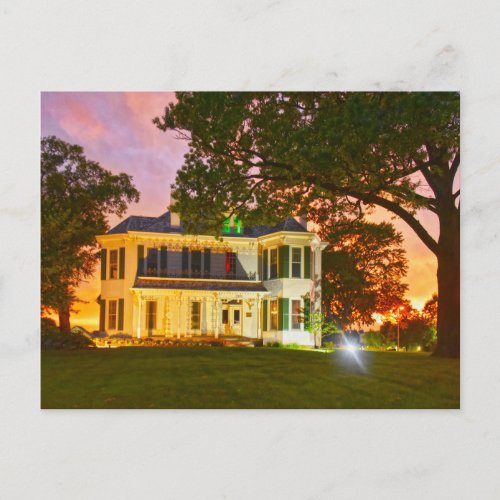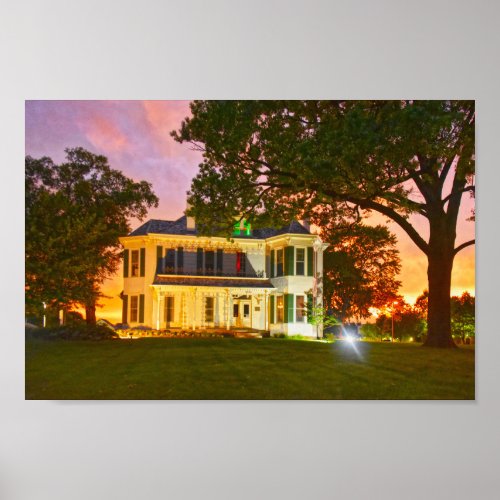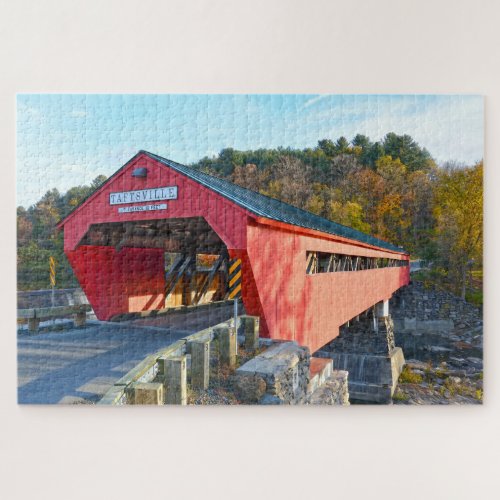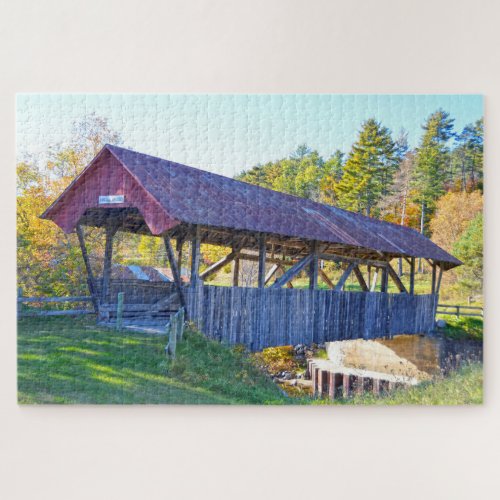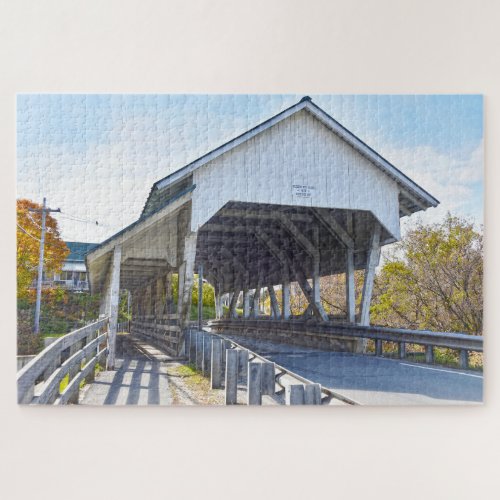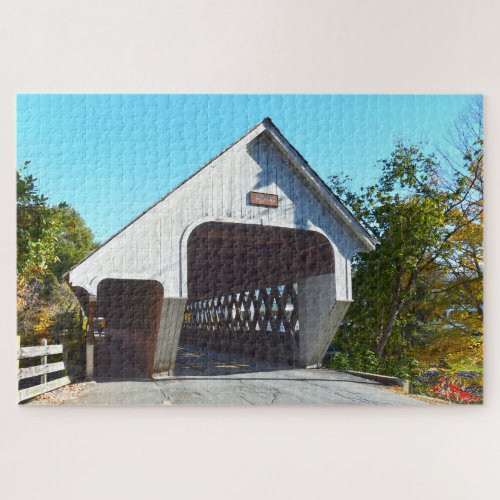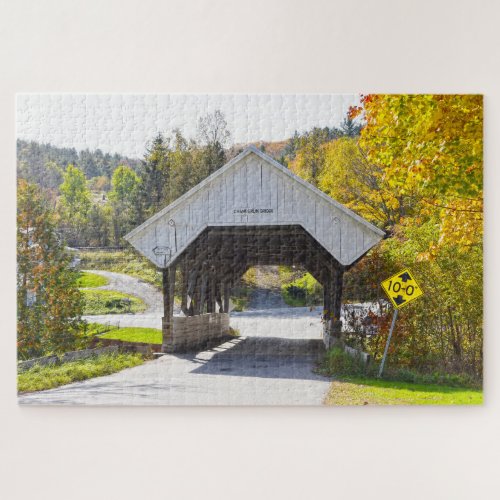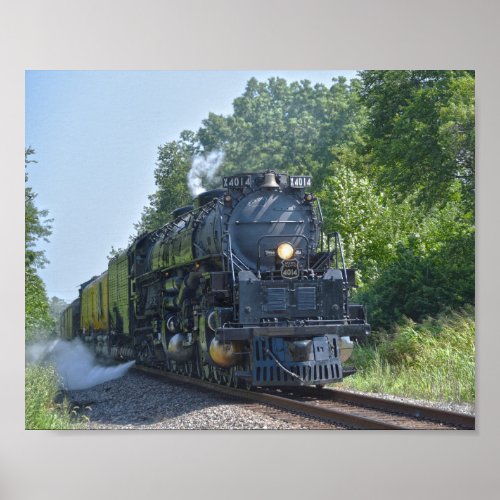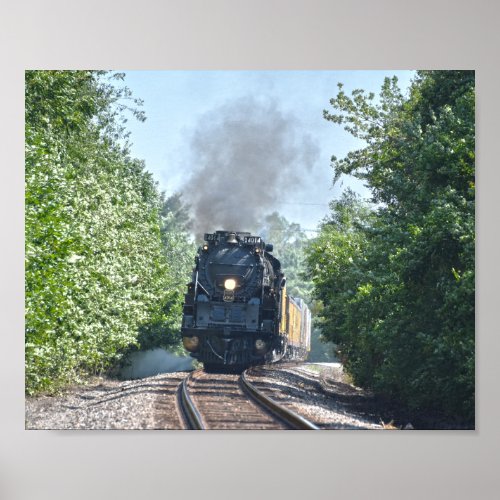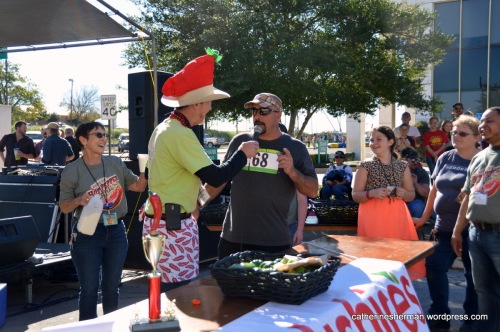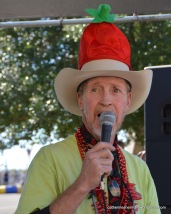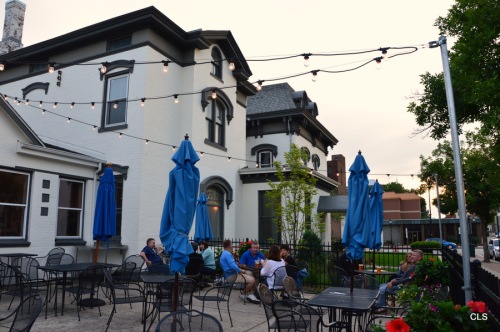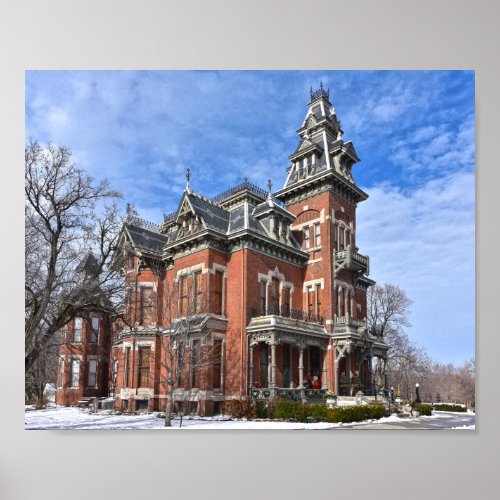
Vaile Mansion, Independence, Missouri.
Each Christmas season, the Vaile Mansion in Independence, Missouri, is lavishly decorated for Christmas in a Victorian style. I recently toured the beautiful mansion with a friend, who had visited the mansion when it was decorated for a previous Christmas season. Each Christmas season’s decor is different, based on a Victorian theme. This year was a Victorian Christmas Romance. Some of the themed rooms, all decorated by different designers, were Phantom of the Opera, Sunflowers and Music, coordinated by the Vaile Victorian Society. Mother Nature added her own touch with a blanket of snow on the lawn. It was all gorgeous!

The Vaile Mansion in Independence, Missouri, is decorated every Christmas season, coordinated by the Vaile Victorian Society, with a Victorian theme and is open for tours.
The follow information about the Vaile Mansion is from three separate sources, which I have linked at the bottom:
Built by Colonel and Mrs. Harvey M. Vaile in 1881, the Vaile Mansion was “the most princely house and the most comfortable home in the entire west,” the Kansas City Times reported in 1882. Situated on North Liberty Street, a mile north of the historic Independence Square, according to the Vaile Mansion’s website.
The three-story Gothic-like mansion includes 31 rooms, 9 marble fireplaces, spectacular painted ceilings, flushing toilets. This mansion is one of the best examples of Second Empire style architecture in the United States. The Vaile Mansion was designed by Kansas City architect Asa Beebe Cross (1826–1894) in the Second Empire style; its design was reportedly inspired by a large house visited by Vaile and his wife Sophie in Normandy. The mansion is constructed of hand-pressed red brick, partially trimmed with white limestone.

Servant gossip and a local newspaper reporter’s description in 1882 of the mural on the ceiling over Colonel Vaile’s bed caused tongues to wag in Independence, Missouri. An Italian artist painted the mural titled “Innocence” of a woman rising from a bed. Part of her anatomy is revealed, which was the cause of the scandalous talk.
The mansion features thirty-one rooms with fourteen-feet-high ceilings decorated by French, German, and Italian artists. All of the original furniture was auctioned off when the estate left the Vaile family (the house was refurnished by the Vaile Victorian Society after 1983); however, the interiors still boast much of the original paintwork, nine marble fireplaces (one of which cost $1,500), and two of the three original chandeliers, originally intended for the White House (Harvey Vaile was able to purchase them for $800 while he was in Washington, D.C., because there was some flaw in them). State-of-the-art amenities original to the house include speaking tubes, gasoliers, indoor running hot and cold water, and flush toilets; equipped with a built-in 6,000 gallon water tank, the Vaile Mansion was the first house in Jackson County with indoor plumbing.

This chandelier — or upside down — Christmas tree hangs in the entry of the Vaile Mansion in Independence, Missouri.
The mansion was originally surrounded by a 630-acre estate (now reduced to 5.6 acres), which included a grape vineyard and an apple orchard. Vaile had a wine processing plant on his property, as well as a wine cellar capable of holding 48,000 gallons.
A “strong supporter of the abolitionism movement” with a passion for politics, Vaile was among the founders of the Republican Party in Jackson County. Vaile built his wealth by investing in several business ventures, primarily interests in the construction of the Erie Canal; he was also part-owner and operator of Star Mail routes, with rights for the route to Santa Fe.
Sophie Vaile died in 1883. Her husband lived in the house for 12 years afterward. The Vailes were childless, and Colonel Vaile bequeathed the mansion to a college. Relatives contested the will. The mansion turned into a retirement home until it was purchased after the owner’s death by Roger and Mary Mildred Dewitt, who gifted the mansion to the city of Independence in 1983. That year neighbors formed the Vaile Victorian Society, and they’ve been meticulously restoring, decorating and caring for the house ever since.
Vaile Victorian Mansion Official Website.
About the Vaile Mansion.
Mansion Visitors Have Themselves a Scandalous Victorian Christmas.

Scenes from the 2018 Vaile Mansion Victorian Christmas Romance. Each room is decorated, even the bathrooms.

The Ladies’ Parlor features one of a pair of chandeliers, original to the mansion, that were intended for the White House. The White House staff rejected the chandeliers, because they didn’t match. Vaile was able to purchase them for $800 while on a visit to Washington, D.C.
Click on any photo below to see a large size.

Scenes from the 2018 Vaile Mansion Victorian Christmas Romance. Each room is decorated, even the bathrooms.

The Ladies’ Parlor features one of a pair of chandeliers, original to the mansion, that were intended for the White House. The White House staff rejected the chandeliers, because they didn’t match. Vaile was able to purchase them for $800 while on a visit to Washington, D.C.

This chandelier — or upside down — Christmas tree hangs in the entry of the Vaile Mansion in Independence, Missouri.

Servant gossip and a local newspaper reporter’s description in 1882 of the mural on the ceiling over Colonel Vaile’s bed caused tongues to wag in Independence, Missouri. An Italian artist painted the mural titled “Innocence” of a woman rising from a bed. Part of her anatomy is revealed, which was the cause of the scandalous talk.

The Vaile Mansion in Independence, Missouri, is decorated every Christmas season with a Victorian theme and is open for tours.




